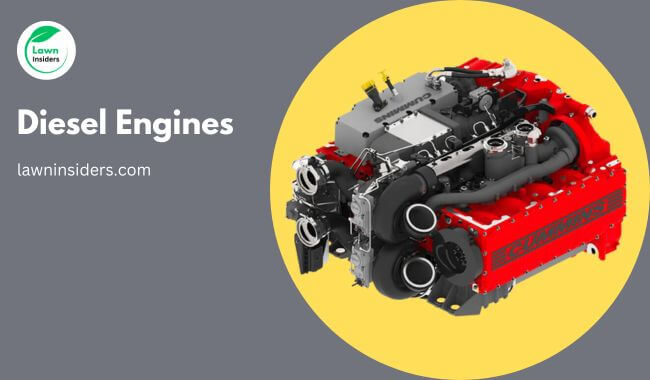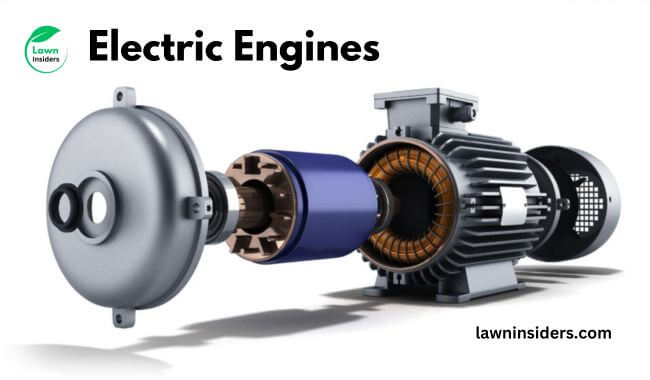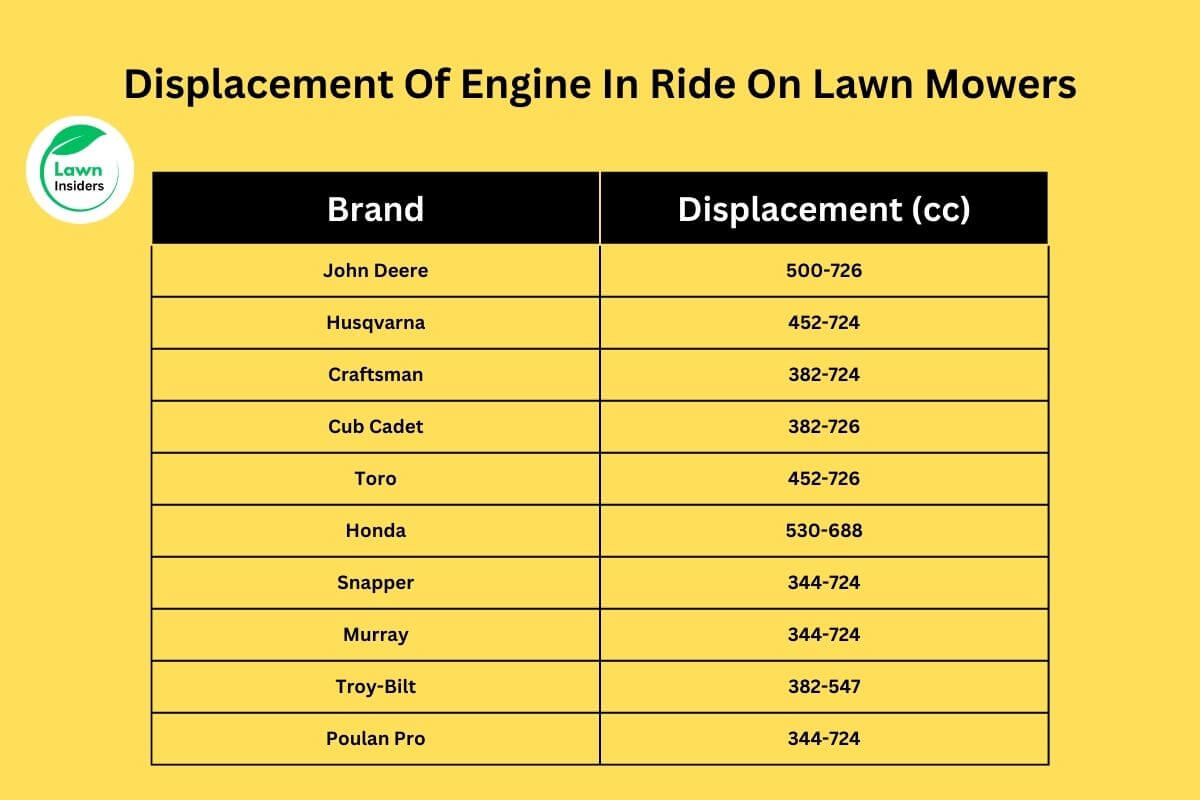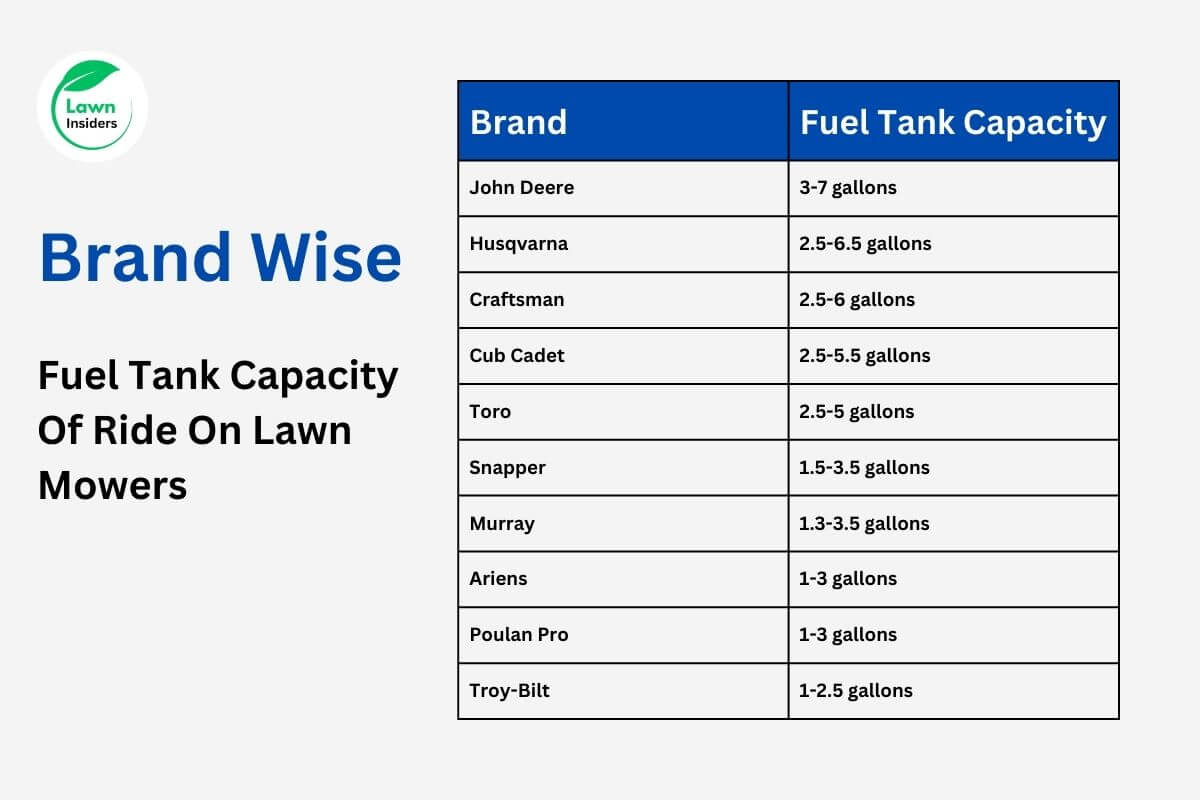Buying Guide Of Ride On Lawn Mower | Beginners Guide

A ride on lawn mower is useful for managing huge lawns and extensive landscapes. A ride-on lawn mower is a lawn mowing tool that allows you to sit on a seat while you mow.
These mowers make short work of mowing large lawns with strong engines, huge cutting decks, and smart maneuvering features.
The cutting width, engine power, transmission type, maneuverability, and comfort features. And a ride-on lawn mower’s maintenance needs are discussed in this buying guide.
Whether you own a large private residence or commercial lot, a ride-on mower can change how you mow the grass.
Here are some significant elements to be considered before buying a Ride-On-Lawn Mower for smart buying:
- Cutting Quality
- Engine Power
- Types of drive
- Engine Type
- Displacement of Engine
- Fuel Tank Capacity
- Oil Recommendation
- Warranty
Let’s dive into the above points so you can easily decide.
Cut Quality of Ride On Lawn Mowers:
The cutting quality of a ride-on lawn mower is typically measured in terms of the width of the cut, which is usually expressed in inches. The width of the cut is determined by the size of the mower’s deck, which is the platform that holds the blade and cuts the grass.
Most ride-on lawnmowers have decks that range in size from 30 inches to 54 inches. With the most common sizes being around 42 inches. The deck size you choose will depend on the size of your lawn and the type of grass you are cutting.
Larger deck size will allow you to cut a wider swath of grass with each pass, saving you time and effort. However, a larger deck may be more difficult to maneuver in tight spaces or around obstacles.
Ultimately, the best cutting quality for your ride-on lawn mower will depend on your specific needs and preferences. Researching and comparing different models is always good for finding the one that best meets your needs.
Engine Power of Ride on Lawn Mowers:
The engine power of a ride-on lawn mower is typically measured in horsepower (HP). The engine power of a lawn mower can have a significant impact on its performance and capabilities.
Lawnmowers with larger engines generally have more power and can handle tougher grass and thicker grass more easily. They may also be able to cut larger areas more quickly. However, they may also be more expensive and consume more fuel.
Lawnmowers with smaller engines may be less powerful and need help to handle very dense or overgrown grass, as well as larger engines. They may also be slower when it comes to cutting large areas. However, they may be more fuel efficient and cost less to operate.
When choosing a ride-on lawn mower, it’s important to consider the size of your lawn and the type of grass you’ll be cutting. This will help you determine the appropriate engine size and power for your needs.
Types of drive in Ride on Lawn Mowers:
Riding lawnmowers come with a variety of drive systems. The most common types are:
Rear Wheel Drive:
In this type of drive system, the mower’s rear wheels get power from the engine and propel the mower forward. This type of drive system is common in self-propelled mowers and used for flat lawns.
Front Wheel Drive:
In this type of drive system, the front wheels of the mower get power from the engine and propel the mower forward. This type of drive system is used for hilly or uneven lawns, providing better traction and stability.
All Wheel Drive:
In this type of drive system, all of the mower’s wheels get power from the engine and propel the mower forward. This type of drive system is used for very hilly or uneven lawns, providing maximum traction and stability.
Zero Turn Drive:
In this type of drive system, the mower has two independent drive wheels that can be controlled separately. This allows the mower to make very tight turns and is often used for maneuvering around obstacles or tight spaces.
Engine Type of Ride on Lawn Mowers:
Several different types of engines are in use in ride-on lawnmowers. The most common types are:
Gasoline Engines:
These are the most common engines used in ride-on lawnmowers. They get power from gasoline and typically have a two- or four-stroke design. Gasoline engines are generally more powerful and have a longer range than other types of engines. But they are more expensive to operate and may require more maintenance.

Diesel Engines:
These engines get power from diesel fuel and are typically more powerful and efficient than gasoline engines. They are used in larger ride-on mowers, such as those used in commercial or industrial settings. However, they feel more expensive to purchase and may require specialized fuel.

Electric Engines:
These engines get power from electricity and are typically more environmentally friendly than gasoline or diesel engines. They are quieter and require less maintenance, but they may have a shorter range and are unsuitable for larger lawns or dense grass.

Hybrid Engines:
These engines combine a gasoline engine with an electric motor, allowing them to switch between the two power sources as needed. Hybrid engines may be more fuel efficient and have a longer range than electric ones but may be more expensive.

Ultimately, the type of engine you choose for your ride-on lawn mower will depend on your specific needs and preferences.
Displacement of Engine in Ride on Lawn Mowers:
The displacement of an engine in a ride-on lawn mower typically expresses in cubic centimeters (cc) or cubic inches (ci). And does not directly correspond to horsepower (HP). However, the displacement of an engine can have an impact on its horsepower output.
In general, larger engines with a higher displacement will be able to produce more horsepower than smaller engines with a lower displacement.
However, other factors can affect an engine’s horsepower output, including the engine’s design, the type of fuel it uses, and the efficiency of the combustion process.
When buying a ride-on lawn mower, it’s important to consider the engine’s horsepower and displacement. A mower with a larger engine displacement may be more powerful, but it may also be more expensive to operate and require more maintenance. It’s important to find a balance that meets your needs and budget.

Fuel Tank Capacity of Ride on Lawn Mowers:
The fuel tank capacity of a ride-on lawn mower refers to the amount of fuel the mower can hold in its fuel tank. The tank capacity typically measures in gallons and can range from 1 to 8 gallons, depending on the size and type of the mower.
The fuel tank capacity of a lawn mower is an important consideration, as it determines how long the mower can operate without needing to refill the fuel tank.
A larger tank capacity may allow you to mow longer without stopping to refill, saving you time and effort. However, a larger fuel tank may also be heavier and require more fuel.
When choosing a ride-on lawn mower, it’s important to consider the size of your lawn and the type of grass you’ll be cutting. This will help you determine the appropriate fuel tank capacity for your needs.

Oil Recommendation for Ride On Lawn Mowers:
Even though most people recommend SAE 30 motor oil for lawn mower engines, it’s always best to go with what the manufacturer suggests.
This will help ensure that the engine runs smoothly and efficiently. Avoid using fuels that contain ethanol, as these can cause fuel system issues and may void the manufacturer’s warranty.
These ideas help to spark your creativity and encourage you to choose the best fuel for your ride-on lawn mower. Remember, using high-quality, unleaded gasoline and adding a fuel stabilizer can help ensure your lawn mower runs smoothly and efficiently.
Price Range of Ride On Lawn Mowers:
The price of a ride-on lawn mower can vary significantly depending on various factors, including the size of the lawn mower, the type of engine, the brand, and any additional features or accessories.
Here are some general price ranges for ride-on lawnmowers:
Entry Level Ride On Lawn Mowers:
It typically starts at around $1,000 and can go up to $2,000. These models may have smaller engines and fewer features, but they can still be effective for smaller lawns.
Mid Range Ride On Lawn Mowers:
They range from $2,000 to $3,500 and may have larger engines, more advanced features, and better build quality.
High End Ride On Lawn Mowers:
These can cost $3,500 and may have professional-grade engines, advanced features, and top-of-the-line build quality.
Remember that these price ranges are just estimates, and the actual cost of a ride-on lawn mower will depend on the specific model and features you choose. It’s always good to shop around and compare prices from different retailers before purchasing.
Warranty of Ride on Lawn Mowers:
Ride on lawnmowers generally come with a manufacturer’s warranty that covers defects in materials and workmanship. The length of the warranty and the specific terms and conditions. It can vary depending on the brand and model of the lawn mower.
Most ride-on lawnmowers come with a limited warranty, which covers the cost of repairing or replacing defective parts for a certain period. Depending on the specific model and brand, this period can range from a few months to several years.
It’s important to carefully read the warranty terms and conditions before purchasing a ride-on lawn mower. So you know what is in it and what is not.
Make sure also to follow the manufacturer’s recommended maintenance schedule. And use the lawn mower as intended to help ensure it stays in good working order and avoid voiding the warranty.
Conclusion:
In conclusion, using a ride-on mower is a fast and easy way to keep a large lawn looking neat if you need to mow a large area of grass quickly and easily.
Whether it’s a personal lawn or a commercial site, a ride-on mower is the way to go. By incorporating a ride-on mower’s ease and productivity into your regular lawn maintenance routine, please take advantage of it. All the best with your mowing!
